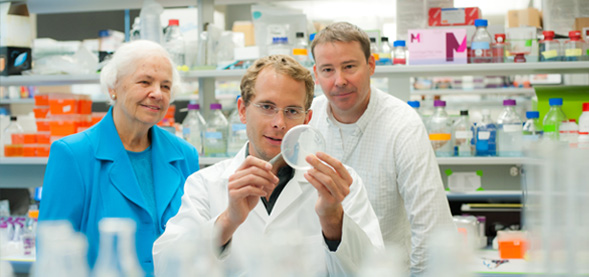DNA Methylation and SETDB1/H3K9me3 Regulate Predominantly Distinct Sets of Genes, Retroelements, and Chimeric Transcripts in mESCs
Authors: Mohammad M. Karimi, Preeti Goyal, Irina A. Maksakova, Misha Bileny, Danny Leung, Jie Xin Tang, Yoichi Shinkai, Dixie L. Mager, Steven Jones, Martin Hirst and Matthew Lorincz , Lab of Matt Lorincz, Molecular Epigenetics Research Group, Department of Medical Genetics
Published in Cell Stem Cell Volume 8, Issue 6, 3 June 2011, Pages 676-687 ![]() doi:10.1016/j.stem.2011.04.004
doi:10.1016/j.stem.2011.04.004
Abstract: DNA methylation and histone H3 lysine 9 trimethylation (H3K9me3) play important roles in silencing of genes and retroelements. However, a comprehensive comparison of genes and repetitive elements repressed by these pathways has not been reported. Here we show that in mouse embryonic stem cells (mESCs), the genes upregulated after deletion of the H3K9 methyltransferase Setdb1 are distinct from those derepressed in mESC deficient in the DNA methyltransferases Dnmt1, Dnmt3a, and Dnmt3b, with the exception of a small number of primarily germline-specific genes. Numerous endogenous retroviruses (ERVs) lose H3K9me3 and are concomitantly derepressed exclusively in SETDB1 knockout mESCs. Strikingly, ∼15% of upregulated genes are induced in association with derepression of promoter-proximal ERVs, half in the context of “chimeric” transcripts that initiate within these retroelements and splice to genic exons. Thus, SETDB1 plays a previously unappreciated yet critical role in inhibiting aberrant gene transcription by suppressing the expression of proximal ERVs.





